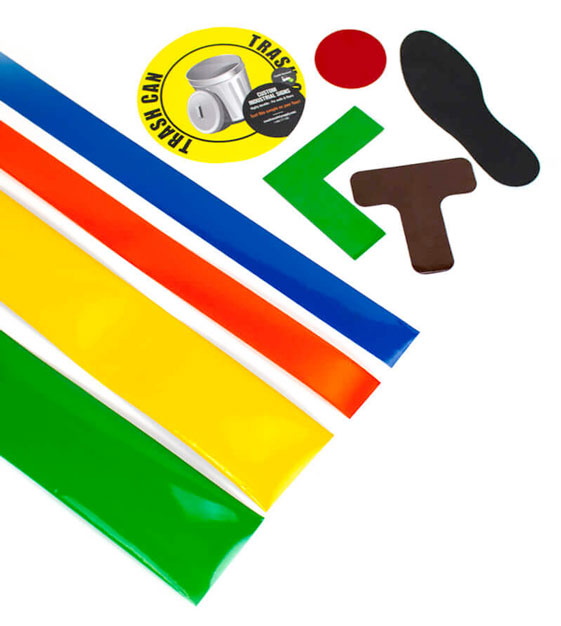
Markings on a shop floor can indicate a multitude of things, which are all dependent on the location of the markings as well as the color the tape is. Color standards for floor marking are regularly sourced from OSHA and ANSI, a regulatory body and a standard setting organization respectively. Becoming compliant with OSHA’s color code for floor marking may look something like the following:
- Yellow for forklift traffic and pedestrian lanes, aisleways, work cells, and egress.
- White for production equipment locations, racks, etc.
- Red for red tag areas or defect areas.
- Orange for energized equipment or material inspection areas.
- Green for finished goods.
- Blue for raw materials.
- Black for WIP.
- Black and Yellow hazard tape for physical risks to employees.
- Red and White for keeping the area clear regarding safety.
- Black and White for keeping the area clear for operational purposes.
Using floor marking tape in these instances along with the correct color are imperative for continuity regarding workplace safety. Think of it as this way, if there are two fire extinguisher stations along with fire related response equipment, then both have to be marked with red and white hazard tape. If one was just a solid red and the other was hazard tape, it might be confusing or unrecognizable from a long distance away. This can become a serious problem in the event of an emergency.
The point here is to be consistent and organized within the building. Consistency is key to a safer workplace where everyone is aware of the rules and the process that must be followed.
Similar Questions
- What are floor marking color standards?
- How can floor markings be utilized in aisles?
- What is black and yellow tape used for?
- What are common floor markings in warehouses?
- What are OSHA’s floor marking guidelines?
- What are the 9 safety colors?
- What is the difference between floor marking tape and floor paint?
- What are floor marking standards?
- What are some lesser-known floor marking uses?

